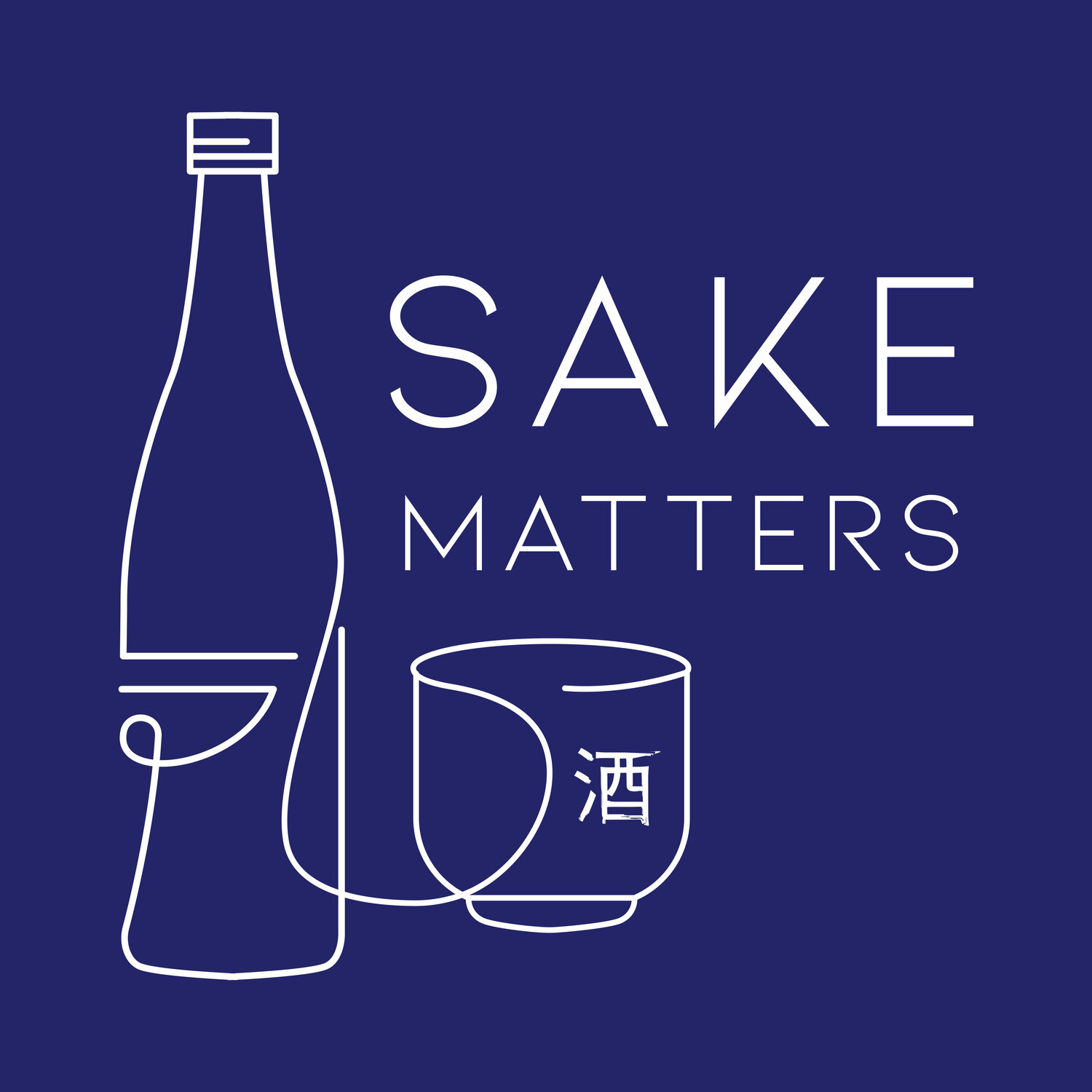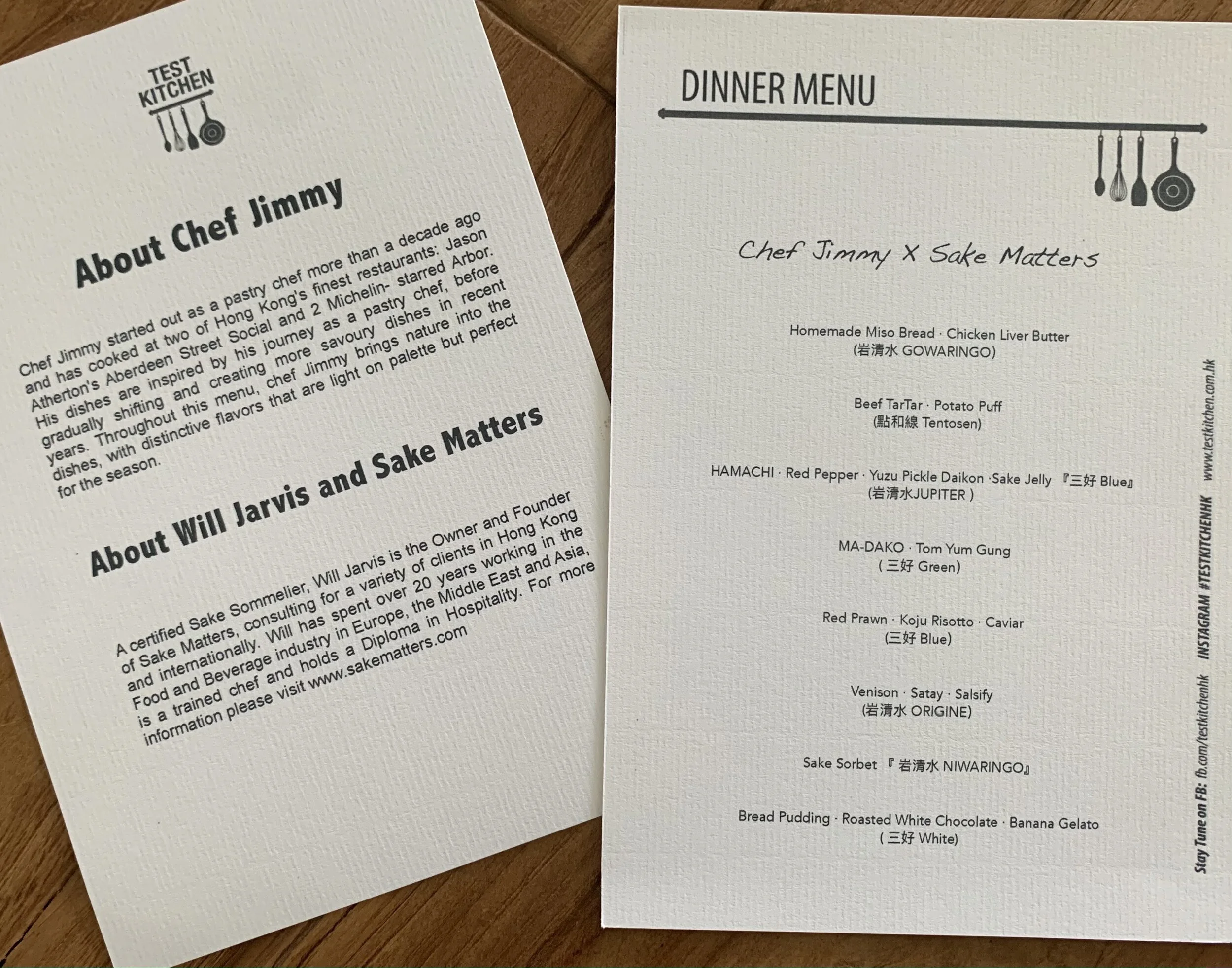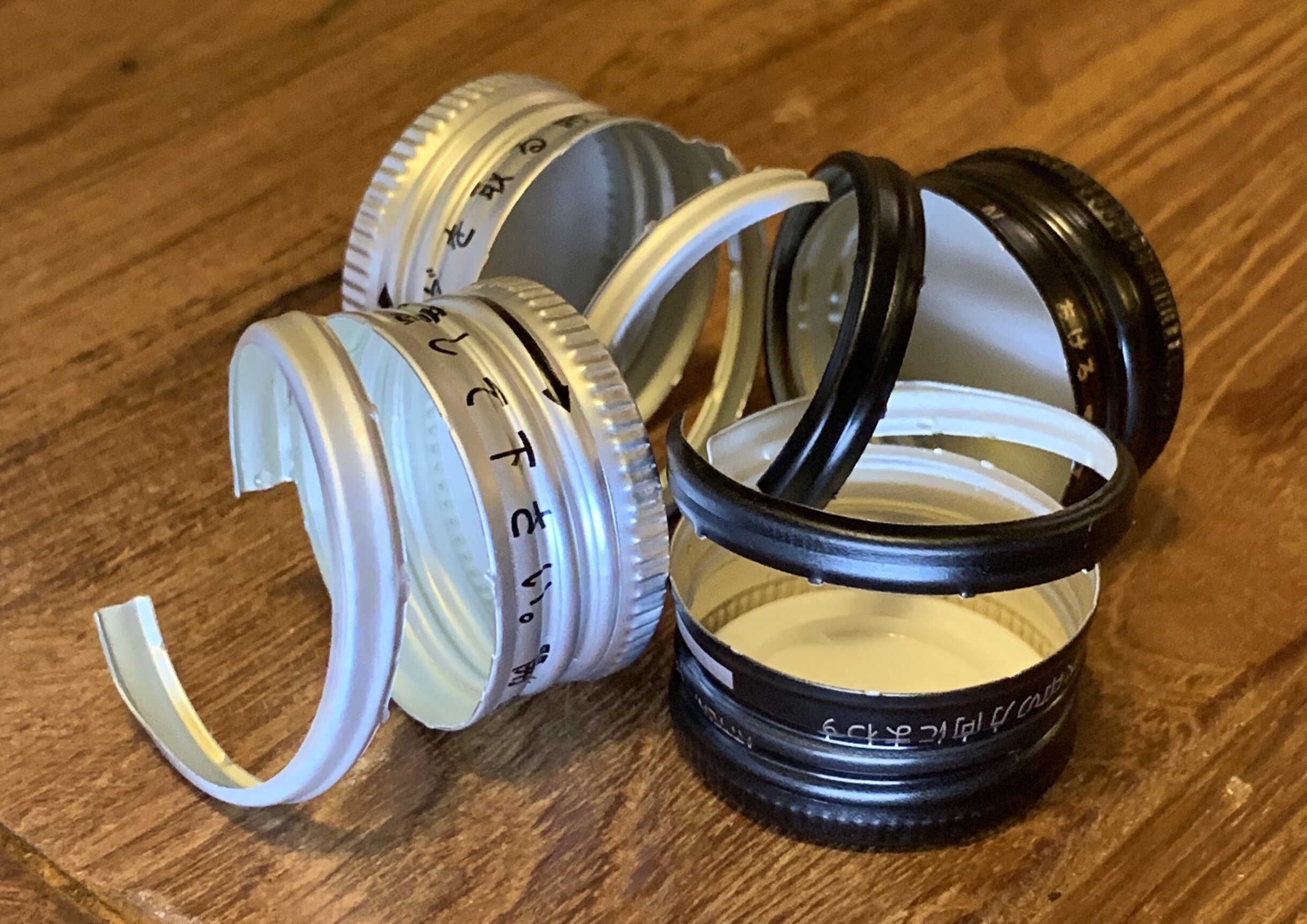EVENTFUL
In a year where pretty much all large scale events have been cancelled, and some of 2021’s too, it was a real treat to be involved in a two-night production here in Hong Kong, and Sake Matters’ first genuine gig.
And that explains my absence from posting. But I’m back, for now anyway.
Having worked in Marketing for longer than I’d care to recall, events have been a big part of my working life. The difference here being that this had tended to take the format of specialist agency doing a big chunk of the work, with me managing the budget, scope and message, and probably interfering a little too much and tweaking things way too late in order to appear a valuable protagonist in the proceedings.
On this occasion, the agency is, well, me and I was approached earlier this year by burgeoning export-import team Flavour of Life. We both share a passion for small production artisan Sake, so why not do something together?
Anyway, after many messages, proposals, postponed meetings (thanks Covid), there seemed an inter-virus spike window to put together a two-night tasting menu with paired Sakes, and so it became game on.
As Sake Matters, my role was very much hands on. Some elements great fun, not least a tasting of both the Sakes and the menu together. The flipside of working with small breweries is that they don’t have a marketing team, much of a website or, seemingly, any real literature that resonated as suitable cribsheets to assist with the pairings and descriptions that I found myself writing furiously, my palate under some pressure, as we chomped and spat our way through eight courses.
At this point, let me introduce my co-conspirators: Flavour of Life’s husband and wife combo of Eric and Kayoko; host and owner of pop-up culinary platform Test Kitchen, the ever-cool co-founder Vincent; Test Kitchen regular and Michelin-pedigree Chef Jimmy.
Eric, left, and Jimmy, right (thirsty?)
Marketing head on, the key message here was this shouldn’t be just another decadent menu for Hong Kong’s foodies to splash the cash on (let’s face it, there’s plenty of folk still desperate to spend in 2020 in light of the restrictions and despite the economic downturn), it should be something special.
So all the courses would be paired with a Sake (well all but one), not the usual dégustation format of wine-wine-wine-Sake (hurrah!)-wine-wine-dessert wine. And we decided to get away from too many Japanese flavours, so agreed on a seasonal French-Japanese menu that evolved into more what I would call a pan-Asian-traditional European experience. More on this below, and you might term it differently, but it got people talking. And people booking.
Sold Out
a message I was delighted to read just a couple of days after we sent out the email and pushed it on Social Media. Oversubscribed actually.
To make life a little simpler, the initial arrangement had always been to promote just two breweries, Igaya Shuzo and an old favourite of mine, Abunotsuru Shuzo.
The former, located in Nagano’s high altitudes, is a husband and wife affair. Amusingly (to me at least), they started brewing in the same year they got married. Must be some sort of connection there.
Igaya Sakes are not categorized on the bottle either with a classification or a seimaibuai - which is a legal thing but unusual - preferring to let the consumer make their own mind up, rather than prejudice expectations as to how it should taste based on a percentage. A nice touch, unless you’re having to write notes on it, as I was, which made it a little more blind than usual.
But their Sakes are expressive and use up to 50% koji-mai versus the more typical 20% and are packed with flavour, the heightened koji-mai levels bringing forward some additional sweetness and nutty funkiness. Plus, the Sakes are all Muroka Nama Genshu which for me serves to underline any characteristics. They are a bit wild and brash, but crucially they are food Sakes, and that helped with the pairings.
So how about Miyoshi-san’s Sakes from Abunotsuru Shuzo to the south west in Yamaguchi Prefecture? I like his Sakes a lot, I’ve written previously about them and the iconic labels that have won him awards. They are quite special.
With a range of Namanama, Namazume and Hi-ire Sakes for the event and more textbook processes in place, plus pure 100% yamada nishiki rice usage all through, this was a more challenging brewery to work with in terms of matches.
But, to help, there were some key educational pieces that would inform the decisions - Miyoshi Blue is a 60% yamada nishiki Ginjo, Miyoshi Green a 50% yamada nishiki Daiginjo. Separated by just 10% (OK, Blue is Namazume, Green Namanama), this allowed for a nice comparison piece across two courses and the umami uptick with the Blue was my way in, pairing it with a Koji Risotto dish.
Likewise, the only Origarami of the night came courtesy of Miyoshi White, and it was a no brainer to pair this bready, biscuity Sake with dessert.
I now just needed to commit all this newly found knowledge to memory, trust that I could communicate it passionately (and audibly, through a mask of course), not overindulge too soon and respond to any questions from what turned out to be a knowledgeable and inquisitive audience.
I think I did. My wife and friends said I did but they’re biased. But we’re doing some more Events in January 2021, so guess my Sake Matters debut role wasn’t a bad one. You never know, with vaccines on the way we’ll even be able to get brewers and chefs over from Japan, and more…
Enjoy the visual feast that follows, sorry you can’t partake.
Please don’t drool too much
Igaya Shuzo: Gowaringo
Homemade Miso Bread - Chicken Liver Butter
Unlike many unpasteurised Sakes, Gowaringo is quite light and lacks the rawness typical of namazake. There’s an earthiness to it and some nutty funkiness which works well with the miso element of the bread. Some gooseberry tartness helps cuts through the richness of the butter. A good introductory Sake for the dinner.
Beef Tartare – Potato Puff
Abunotsuru Shuzo: Ten To Sen
Beef Tartare – Potato Puff
One of Miyoshi-san’s earliest styles of Sake, this top drawer Junmai Daiginjo has an abundance of fruity notes, predominantly banana and pear, but is bold enough to manage the saltiness of the samphire, heat of the horseradish and acidity of the yuzu in this punchy dish. The long thin label is the Toji’s journey, the pearl representing a milestone reached with this Sake.
Hamachi – Red Pepper – Yuzu Pickle Daikon – Sake Jelly
Igaya Shuzo: Jupiter
Hamachi – Red Pepper – Yuzu Pickle Daikon – Sake Jelly
A little fizz greets you as you taste this playful Sake that has an element of sweetness which offsets the fish well but also a hint of spice that matches the heat of the chilli. The Red Pepper Jam is a welcome flavour bomb which seems to bring out a black fruit compote backnote in the Sake.
Ma-dako – Tom Yum Gung
Abunotsuru Shuzo: Miyoshi Green
Ma-dako – Tom Yum Gung
A benchmark unpasteurised Junmai Daiginjo. It’s brash but classy, offering up plenty of strawberry fruit and candyfloss flavours which enhance the spicy mélange of the soup. This Sake is also genshu – no added water – which allows it to be robust enough to stand up to such a powerful piece of cookery.
Red Prawn – Koji Risotto - Caviar
Abunotsuru Shuzo: Miyoshi Blue
Red Prawn – Koji Risotto - Caviar
This Sake is all about the acidity and umami, and it’s there in abundance. Richer than the Miyoshi Green, Blue is distinctly more ricey and savoury which complements brilliantly the earthiness of the risotto. The decadent goodness of the prawn head meat is packed with umami and a citrus undercurrent within the Sake works well with the caviar.
Venison – Satay – Salsify
Igaya Shuzo: Origine
Venison – Satay – Salsify
Igaya’s top bottle. Half the rice used in this Sake is koji-mai giving a mustiness and identifiable fermented flavour working in unison with the iron rich game meat. The koji-mai gives an olive tint to the Sake and a thick mouthfeel, also a result of the high end shizuku drip pressing that relies solely on gravity to separate the Sake from its lees. Chestnut, honey and vanilla notes seem appropriate for this seasonal dish.
Abunotsuru Shuzo: Miyoshi White
Bread Pudding – Roasted White Chocolate – Banana Gelato
A haze of rice particulates identify this Sake, made with 100% yamada nishiki rice – the ‘King of Rices’, as origarami. A great accompaniment to this dessert. The rice shows up as a rice pudding flavour, with a little biscuit thrown in too, and it coats the mouth. A slight sparkle to the Sake freshens things up as does a hint of orange and grapefruit acidity. Great end to the dinner.
FOOTNOTE:
Cheers to everyone involved, customers too of course, for making two great events. Particular thanks needless to say goes to:
Eric and Kayoko’s business Flavour Of Life is based in Hong Kong importing Sake and wine from Japan. For more information, please contact: askus@flavour-of-life.com
…and follow them on Instagram here: @flavour_of_life
To learn more and be inspired by Vincent’s incredible foodspace Test Kitchen please take a look here www.testkitchen.com.hk and follow them at @testkitchenhk
The youthful Jimmy Waitak is cooking up a storm all over Hong Kong, keep track of his adventures here @jimmy_waitak
LINKS:
Abunotsuru Shuzo
2796 Nako, Abu-cho, Abu-gun, Yamaguchi Prefecture, 〒759-3622
www.abunotsuru.jp
@miyoshi_abunotsuru
Igaya Shuzo
1597 Nakano, Nakano City, Nagano Prefecture, 〒383-0013
www.igayasyuzou.com
@iwashimizu.igaya
QUICK GLOSSARY:
Shuzo: Sake brewery. Often added to the company name e.g. Morikawa Shuzo
Seimaibuai: The percentage of rice remaining after the polishing process compared to its original weight (so a 60% seimaibuai reflects that 40% has been polished away)
Koji-mai: Rice that has been inoculated with Koji-kin mold
Muroka: Sake that has not been fine filtered using charcoal
Nama or Namazake: 生酒 (生:raw, fresh, or living; 酒:sake) – in short, unpasteurized Sake
Genshu: Sake that hasn’t been diluted with water meaning it can be a little stronger than the standard 15-16% alcohol
Namanama: Essentially Namazake (i.e. a Sake that has not been pasteurized at either of the two traditional moments during the production process)
Namazume: Sake that is pasteurized just once before bulk storage but not a second time before bottling
Hi-ire: Literally translates as “put into the fire” but in the case of Sake refers to Sake that has been pasteurized
Ginjo 吟醸: Sake made from rice at a polishing ratio below 60%
Daiginjo 大吟醸: Sake made from rice at a polishing ratio below 50%
Origarami: Pressed Sake that has been returned to the tank, now of course without its Sake-kasu but, crucially, it doesn’t spend enough time there for the ori particles to settle, so these rice and yeast residues remain in the Sake as small particulates














